Your Guide to Great Summer Wines — Spectacular Sparkling, Rosé, White and Red Picks
Drink the Good Stuff
BY James Brock // 07.18.20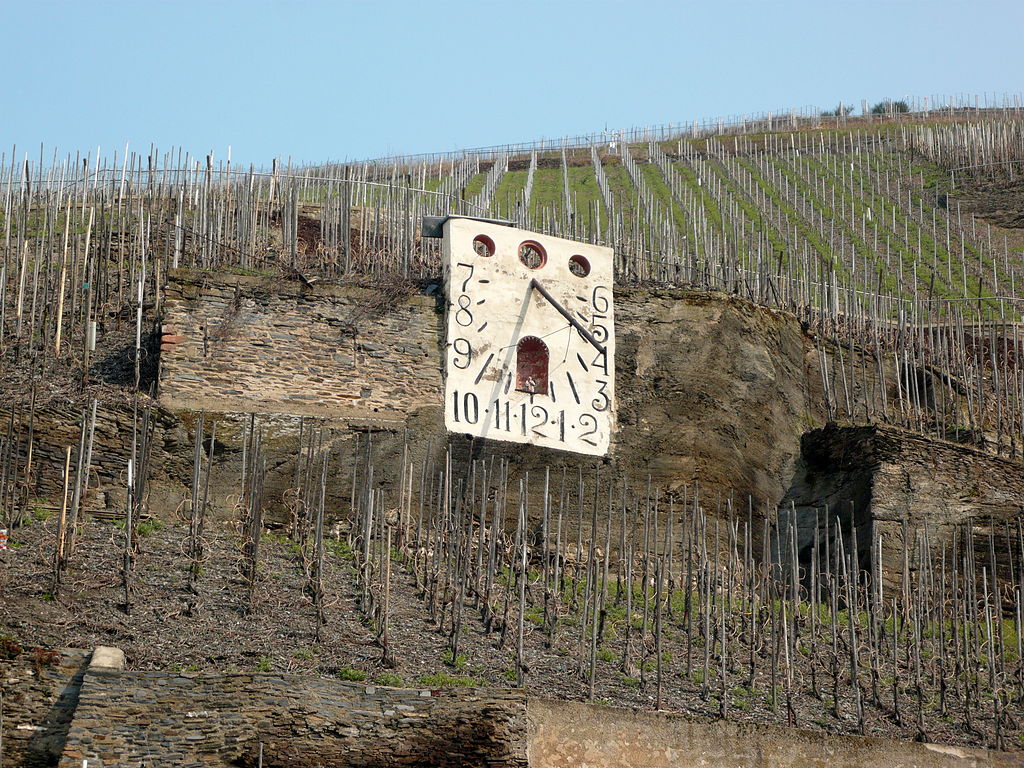
The Zeltinger Sonnenuhr, a landmark in Germany's Mosel region.
Summer is fully in swing, and though it will be over before we know it, and will certainly be a, let’s say, unique, season, there is no reason for you to go without wine, especially wines new to you. (It’s always a good idea to buy something unfamiliar to you on a regular basis, while still enjoying your tried-and-true favorites.)
You have been following the advice of Drs. Fauci and Hotez, your cooking skills have probably improved, and your dinner-party game is assuredly more impressive than it was back in February of this year — even if you’ve been preparing dishes for your immediate family only. You definitely deserve some delicious bottles of wine to pair with your creations (or your takeout fare).
Here is your Summer Wine Guide (and these selections will be more than suitable for fall as well), a collection of bottles from quality producers whose approach to winemaking results in pleasure and exploration for the end user. . . you.
You’ll find three bottles in each category of the guide — sparkling, rosé, white, and red. As a bonus, I’m including a few additional recommendations for your approval, a roster of wines I hope you’ll find intriguing.
Sparkling Wines
We’ll start with some bubbles, because that’s the best way to begin anything. Out of England comes Nyetimber, a sparkling wine produced from grapes grown on an estate an hour south of London. Nyetimber was mentioned in the Domesday Book, and the first vines were planted there in 1988 — the classic trio of Chardonnay, Pinot Noir and Pinot Meunier. Eric Heerema bought the estate in 2006, and Cherie Spriggs and Brad Greatrix have been the Nyetimber winemakers since 2007.
The Classic Cuvée is what we’re drinking, and you can order it from wine.com (or ask for it at your favorite wine merchant). The bottle carries a suggested retail price of $55. The wine’s beads are distinct and fine, and brioche and a touch of nutmeg play in the aroma. I paired it with butter-poached asparagus, and it was a delicious combination; the salt on the vegetable played well with the apple hints in the Nyetimber, and the asparagus’ acidity was lifted by the wine’s spice notes.
The estate puts a code on each bottle of Classic Cuvée that one can enter on the Nyetimber website and learn the particulars of the wine. For example, my bottle’s blend was 62 percent Chardonnay, 30 percent Pinot Noir, and 8 percent Pinot Meunier, with the following vintage blend: 2015 (80 percent); 2014 (9 percent); 2013 (3 percent); 2011 (3 percent); and 2009 (5 percent). It was bottled on March 13, 2016, carries a riddling date of August 12, 2019, and was disgorged on August 20, 2019.
Don’t care to know all of that? Perfectly fine, the contents will be no less pleasurable.
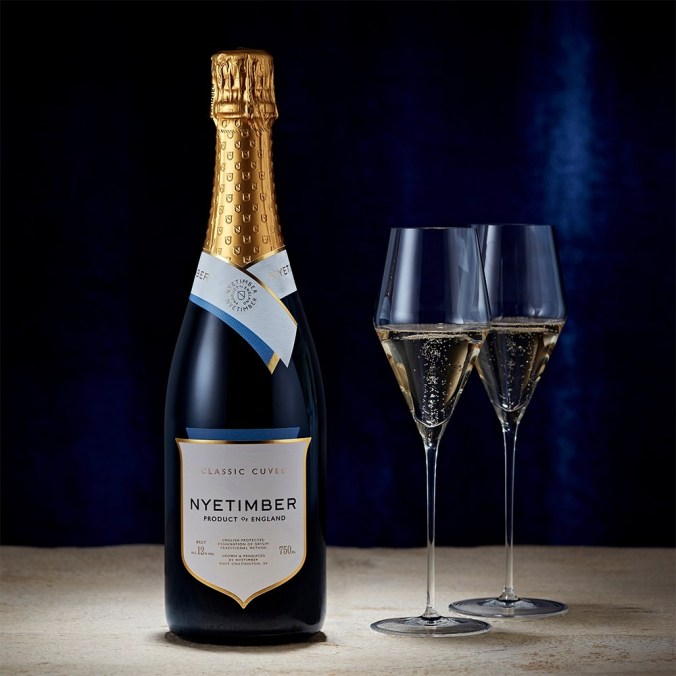
Next, we travel to Oregon’s Willamette Valley AVA, for the 2016 Argyle Vintage Brut. At $28, this sparkling wine is high on my list of bottles to always have on hand. It’s 55 percent Chardonnay, 35 percent Pinot Noir and 10 percent Pinot Meunier, a combination that winemaker Nate Klosterman has turned into something I love to drink before dinner and pair with mussels (prepared with shallots, cream, and bacon or pancetta).
Fruit here comes from Spirit Hill Vineyard (Eola-Amity Hills) and Knudsen Vineyard (Dundee Hills), the former contributing profound minerality, the latter an understated elegance. This wine drinks much more expensive than its price, and the finish will wow you. Bright, an abundance of pinpoint bubbles. . . this is a great vintage of a quality wine.
And now to Italy, and Cleto Chiarli, a storied Lambrusco producer that traces its beginnings to 1860 in Modena. The 2019 Lambrusco Grasparossa di Castelvetro “Vigneto Cialdini” DOC ($17) is what we’re drinking, and if you and your companions are not overly familiar with Lambrusco, this is something you want to taste. It’s 100 percent Lambrusco Grasparossa, and it’s meant to be drunk young, so when you get your bottle, chill it, then open and share. It’s dry, and is a voluptuous deep red-purple in the glass. Serve before a meal, while you are cooking, or with a cold-cut platter of ham and turkey.
Rosé
Many people hold the opinion that Rosé is best consumed in warmer weather, and while I do not want to discourage anyone from drinking it in, say, July or August, there is no need to restrict yourself in that manner. Rosé is not for summer only. That said, here are three bottles of (varying shades of ) pink that will go down well no matter the season.
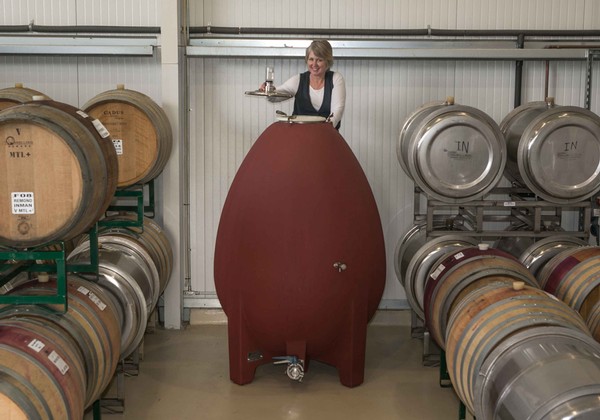
First, the 2019 Endless Crush Rosé of Pinot Noir, OGV Estate ($38), from Inman Family Wines. Kathleen Inman is the winemaker, and the 10.45-acre Olivet Grange Vineyard is the source of the fruit for this lively and refreshing wine. It’s Inman’s “direct-to-press” Rosé (as opposed to saignée). Subtle wild strawberry notes, pale pink, elegant acidity. Open a bottle at lunch (chicken salad, perhaps) or serve it as a pre-dinner drink.
Next, the 2019 MacRostie Russian River Valley Pinot Noir Rosé ($28). This dry wine is drinking stunningly well — I shared a bottle with a friend a few days ago, and it is now on my reorder list. Saignée and direct-to-press are both used here, and the resulting wine is full of peach and strawberry and a touch of citrus.

Rounding out the Rosé category is the 2017 Ruby Primo ($36) from Native Flora. I love this unique wine, and the winemaker and estate owner, Scott Flora, is an iconoclastic perfectionist. When he planted his Dundee Hills estate, established in 2005, he went against convention by setting up its vineyards facing north, a decision that has paid off in the form of some outstanding vintages. Ruby Primo, according to Flora, “sits between a Provence Rosé and a Village Rouge,” an apt description. It possesses a striking garnet color, and its structure will impress you. I drank this with steamed crab, and will do so again happily.
White Wines
I hope that you are drinking lots of white wine. Some regions of the United States, including the state of Texas, are famous for their adoration of red wines, and while there is nothing wrong with that, please do not shun the likes of Chardonnay, Riesling, Chenin Blanc, Albariño, and Viognier. If you do, you are missing out on a world of pleasure.
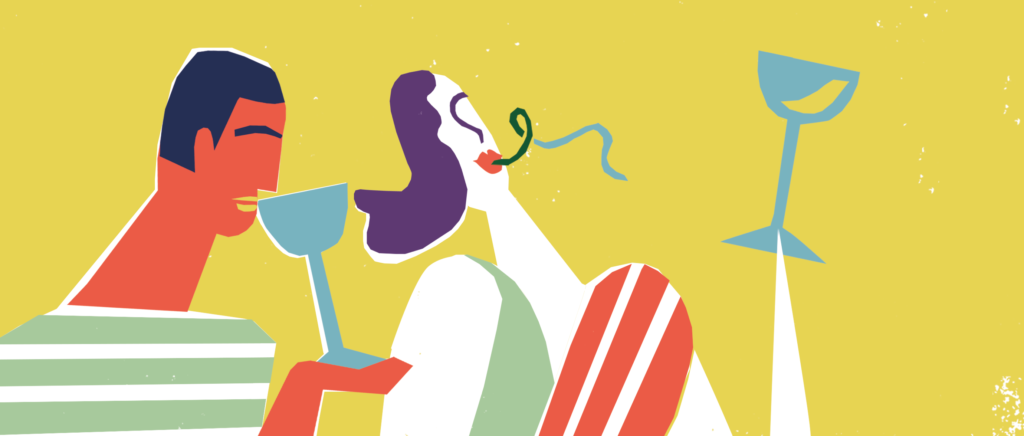
Up first here is a wine from one of my favorite produces, Alois Lageder. Alto Adige is the source of the 2019 RIFF Pinot Grigio, and for the grand sum of $11 (SRP) you get an imminently approachable wine that goes well with an abundance of foods — try it with a roast chicken or poached shrimp. The Lageder family knows its wines, and its partnerships with 90 or so top-quality growers in the Alto Adige make wines such as this one possible for the price. (Do explore other Lageder wines, including its estate-grown selections.)
We will stay in Italy with the 2017 Poggio alle Gazze dell’Ornellaia 2017 ($82), a jewel of a wine made by Olga Fusari. You are undoubtedly familiar with the name Ornellaia — if not, click here for a primer — and this bottle is worthy of the famed name. It’s comprised of Sauvignon Blanc (81 percent), Vermentino (10 percent), Viognier (6 percent), and Verdicchio (3 percent), all picked by hand. The 2017 season was among the hottest and driest on the estate, and the harvest was the earliest in Ornellaia’s history — the first bunch of the Sauvignon Blanc was picked on August 7, and the the Verdicchio and Vermentino were gathered on August 30. This is a wine of distinction.
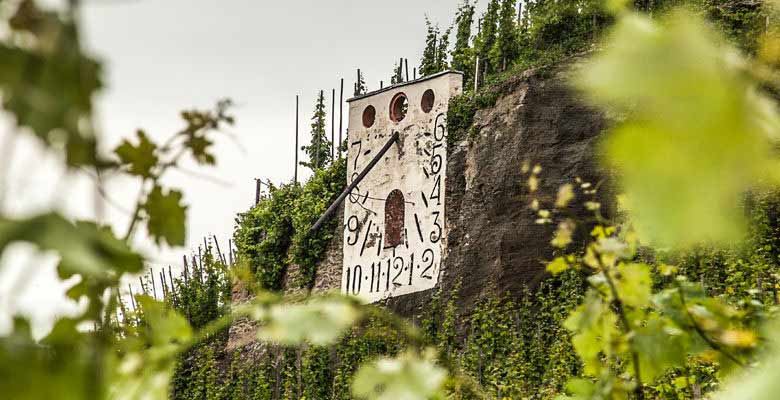
I must now offer you a Riesling, my Lieblingswein. It’s from Markus Molitor, and it is among the best things I have ever tasted — and I sampled it far too soon, for this wine is something I look forward to opening in 20 years. . . it’s potential is simply astounding. The 2015 Zeltinger Sonnenuhr Auslese (gold capsule) — I found it for $119.99 at Zachys — hails from the Mosel, and the fruit grows on a steep, famous vineyard covered mostly in slate
Yields are extremely low, resulting in wines of a particularly high caliber. (Also look for the 2017 vintage of this wine . . . and really, any Molitor wine is worth your money and time.)
Summer Reds
The other evening, I was making some pasta (one cup of unbleached flour, two eggs), and the process took my mind to a plate of duck-stuffed cappelletti I had one evening at Tony’s in Houston. It was a beautiful, sensual dish, and the Pinot Noir paired with it was equally captivating. Which brings us to the red wine selections. Steaks and roasts of beef, lamb and duck, sausage and barbecue. . . red is the thing for these delicacies.
I’ll start with a Pinot Noir, from a great winemaker based in California. James MacPhail has made more than 100 different Pinot Noirs and Chardonnays that have each earned 90-plus points from reviewers and publications, and in 2012 he and his wife and business partner, Kerry, founded Tongue Dancer Wines. His 2018 Tongue Dancer Sonoma Coast Pinot Noir ($49) is a winner. The grapes were sourced from Jim Pratt’s Sexton Road vineyard and the Putnam Vineyard, two fine pieces of land. Hand-picked fruit, meticulous, elegant winemaking, and 150 cases in total — this is a complex, fun wine that you’ll be proud to share. (Don’t hesitate on this one, because quantities were limited to begin with.)
We go back to Italy for the next wine, to Montefalco (Umbria) specifically, and Paolo Bea, whose wines I dream about, and drink as often as I can. Back in 2010, I spent several weeks in Umbia, in an agriturismo above Assisi, and on several occasions drank bottles from the producer. His approach is that of an artisan, and his two sons will, I am confident keep making these desirable wines far into the future.
You should try the 2o12 Montefalco Rosso Riserva Pipparello, a blend of (roughly, depending on the vintage) 60 percent Sangiovese, 25 percent Montepulciano, and 15 percent Sagrantino. I have seen it on sale for $75, so ask your favorite merchant for a bottle. The Pipparello Vineyard is 1,300 feet above sea level, and is mostly gravel and clay. The wine spends a year in stainless, then two years in oak, followed by a final year of aging in the bottle. I love this with wild boar, but any cut of beef will be sanctified by being paired with this magical wine. (Take a look at the video below for a snippet of the Bea approach.)
Heady stuff, this section, and I’m ending the main part of my guide with a twofer. . . because you deserve it. Both are Cabernet Sauvignons, one from Napa, the other from Sonoma. Both represent great value, and are drinking well now. That said, they have been made in an exacting manner, and will reward patient cellaring. I’m ordering one of each to put away until 2030 or so.
First, the 2016 Louis M. Martini Cypress Ranch Vineyard Cab ($100). The high-elevation vineyard, in the Vaca Mountains, produces wines with superb acidity and balance. This one, which is 96 percent Cabernet Sauvignon and 4 percent Petit Verdot, spent 20 months in oak (84 percent new) and one year in the bottle. Cassis and cherry, plus hints of leather and soil, will, I hope, captivate your palate. Pair with any of the meats mentioned above.
Finally, the 2016 from Jordan Vineyard & Winery ($58), the vintage that marks Jordan’s 40th anniversary of producing Cabernet Sauvignon. Maggie Kruse made this one, and though it’s a baby, so to speak, I loved it when I sampled a bottle a few weeks ago. As I wrote, it has ample potential to age with grace and finesse. (I had the honor and pleasure of tasting some Jordan Cabs from the mid-199os and early 2000s not so long ago, and I was impressed: elegant, refined, but still taut.) Again, enjoy this with grilled meats — especially, in my opinion, a rare or medium-rare grass-fed ribeye.
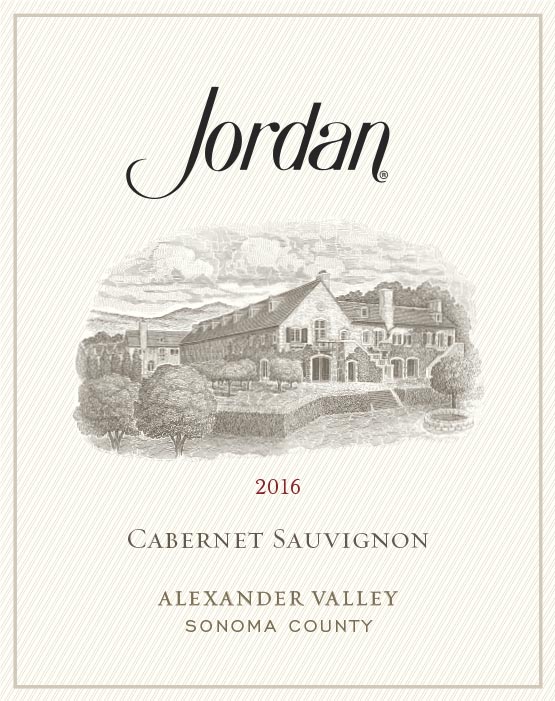
The world of wine is large and diverse, and full of quality. I regret that I cannot offer you in this guide 100 selections (or more). As well, I have, for no reason, neglected Australia, New Zealand, Croatia, Spain … the list of wine-producing countries and regions goes on and on. I will make up for that, I promise.
To close the 2020 Summer and Fall Wine Guide, I leave you with a short list of additional selections you should know, wines I love and appreciate. (Reviews to come.)
As always, drink well, with those you love.
2017 Chappellet Cabernet Franc ($85)
2016 Medlock Ames Thistle Late Harvest Sauvignon Blanc ($40)
2017 Ben Ryé 2017 (375ml) ($46)
2018 Zeltinger Schlossberg Beerenauslese Selbach-Oster (375ml) $95)
2018 or 2019 Pewsey Vale Eden Valley Riesling ($20)
2016 Fattoria Selvapiana Bucerchiale Chianta Rufina ($35)
2017 Olivier Cousin “Pur Breton” ($59.99)
2017 Oliver Zeter Pinot Noir Reserve ($35) (This wine is difficult to find, but it is worth the trouble.)
2019 Chehalem Mountains Rosé of Pinot Noir ($25)
2019 Pinot Noir Rosé, Stoller Family Estate ($28)
Mumm 2011 DVX ($75)
2019 Priest Ranch Sauvignon Blanc ($22)
2017 Mi Sueño Chardonnay ($42)


_md.jpg)







